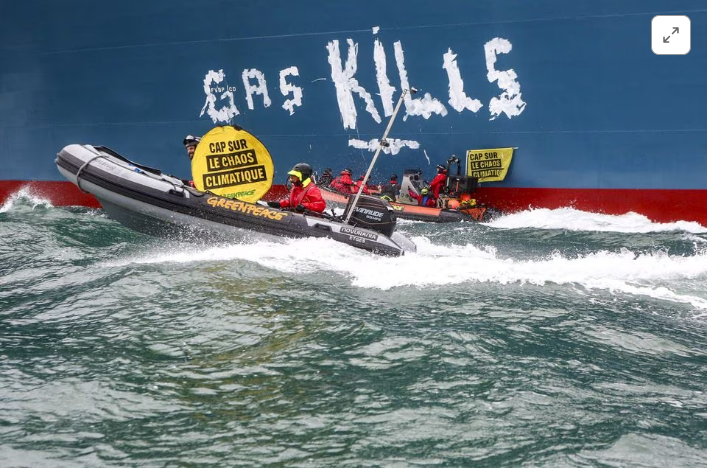
Demand for liquefied natural gas (LNG) in Europe has grown in the wake of the war in Ukraine, with France relying on its four LNG terminals to replace Russian gas imports and help supply neighbours like Germany.
The Cape Ann tanker, which holds the new FSRU, arrived at Le Havre port on Monday morning, LSEG ship tracking data showed.
However, environmental group Greenpeace blocked the tanker's course in protest at what they say is a contradiction between the new terminal and a government pledge last year to make France the first major nation to phase out fossil fuels, a press release from the group said.
"This terminal must not be commissioned and the government must abandon all new fossil infrastructure projects and any plans to extend existing infrastructure," Helene Bourges, head of Greenpeace France's fossil fuel campaign, said.
Activists in kayaks blocked the ship's passage to the port entrance and painted "gas kills" on the side of the tanker, Greenpeace said, adding that members of the group Scientists in Rebellion were also present and supporting the action.
A TotalEnergies spokesperson said the company respects the right to demonstrate.
However, they added that it "deplores any form of violence, whether verbal, physical or material", saying that the safety of both the sailors and the activists was their priority.
The gas infrastructure installed at Le Havre is expected to be in operation for five years and can process five billion cubic meters of LNG annually, the spokesperson said.
Alex Froley, LNG analyst at data intelligence firm ICIS, said the FSRU would be tied into local gas networks before it was ready to start delivering the fuel onshore.
A separate industry source agreed that it would take several days before gas deliveries could begin.
Froley added that current gas supply situation looked "very comfortable", with strong onshore gas storage levels in Europe, and ongoing warm weather keeping heating demand low.